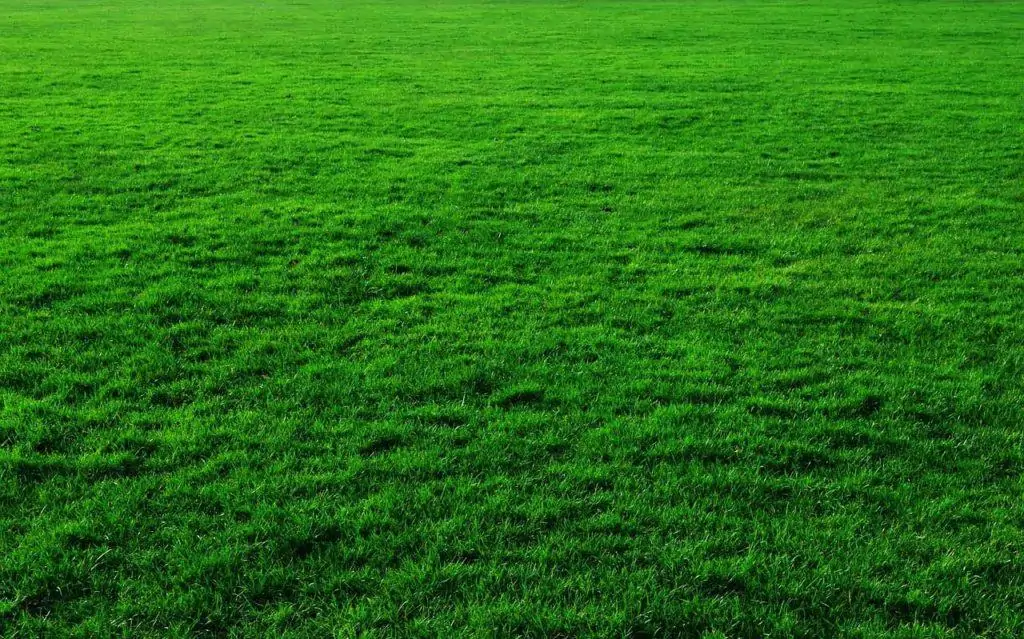In the midst of the blazing hot summer, our lawns need all of the help they can get to keep them looking lush and green as opposed to dry and lifeless.
But for those new to gardening or are simply curious might be wondering: how do I make my grass dark green?
In this article, I cover the information you’ll need to keep your grass a healthy dark green.
So, let’s get started.
What grass is the darkest green?

Choosing the right grass seed for a dark green lawn can be affected by a variety of factors. The climate will influence whether the grass seed produces the desired result, so you’ll need to take where you live into consideration.
Another factor that affects the outcome is whether the location is mostly sunny or shady, so where your lawn is also makes a difference.
Listed below are a few grass types that are known for their dark green color.
Perennial Ryegrass – Perennial ryegrass (Lolium perenne) produces a green lawn year-round. Best suited for mild to moderate temperatures, this grass thrives in direct sunlight. Perennial ryegrass is highly tolerant of being stepped on and can be mixed with other varieties that are dormant during the winter to produce a lush, dark green lawn all year round.
Fescue – Hard fescue (Festuca longifolia) is a cool-season grass that enjoys growing in shady conditions, setting it apart from other grasses. This type of grass does well on low fertility soils, however, is not as tolerant about being stepped on regularly.
Zoysia Japonica – Zoysia japonica is generally referred to as Zoysiagrass and has a deep, dark green color. Zoysiagrass is perennial, so it comes back year after year when grown in the right climate and produces a thick turf that is very tolerant of a number of conditions. However, this grass is better suited to hot climates as opposed to places that have extremely cold weather.
Kentucky Bluegrass – Kentucky bluegrass (Poa pratensis) is a cool-weather grass variety. When given its preferred growing conditions and proper care, this grass produces a dense, durable lawn. Although this grass can be excellent in the winter, it is worth noting that some varieties are susceptible to heat and drought.
What fertilizer makes grass green?
When it comes to keeping your back yard in the best condition, you will need a good lawn fertilizer to ensure your grass is a lush, dark green.
After selecting the grass, fertilization is the most important factor in growing a dark green lawn.
If you’re new to gardening, then you might not know that nitrogen, phosphorus, and potassium, or NPK, are known as the ‘big 3’ primary nutrients in commercial fertilizers. These nutrients play a fundamental role in plant nutrition, and in turn, help to keep your grass green.
To encourage green growth, choose a lawn fertilizer with a high percentage of nitrogen such as this: Milorganite 0636 Organic Nitrogen Fertilizer
Nitrogen – Nitrogen is known to help plants stay green, and is one of the big three macronutrients needed in the greatest quantities for healthy turf. It promotes top growth in the lawn by encouraging the production of chlorophyll in the plant.
Phosphorus – Phosphorus promotes root growth and is important for seedling development, cell division, and the synthesis of a variety of different compounds used by plants. However, it is worth noting that phosphorus can be controversial due to its tendency to contaminate water, so this is something to be mindful of.
Potassium – Potassium is the third key nutrient of commercial fertilizers. Potassium’s primary purpose is that it works to help protect your lawn against drought and disease. Alongside this, potassium also protects the plant when the weather is cold or dry, preventing wilt and strengthening its root system.
When choosing your fertilizer, make sure that it has the right balance of these macronutrients to ensure your lawn has the best chance of remaining healthy throughout the seasons, come rain or shine.
Another important factor to mention when making your grass green is water. To maintain thick, healthy growth that remains dark green even throughout the hottest months, the lawn will need supplemental water from irrigation. Grass lawns should be watered at the first sign of drought.
If the grass is beginning to wilt, looks dry, or footprints are visible on the lawn after you’ve been on it, then it is a sure sign that your grass needs to be watered.
In summary
To make the grass in your yard dark green, there are a variety of fertilizers that contain the ‘big 3’ macronutrients to ensure you supplement your lawn to keep it looking as green as possible throughout warmer months.
Alongside this, you will need to be diligent about watering your lawn, especially during the hotter seasons.

